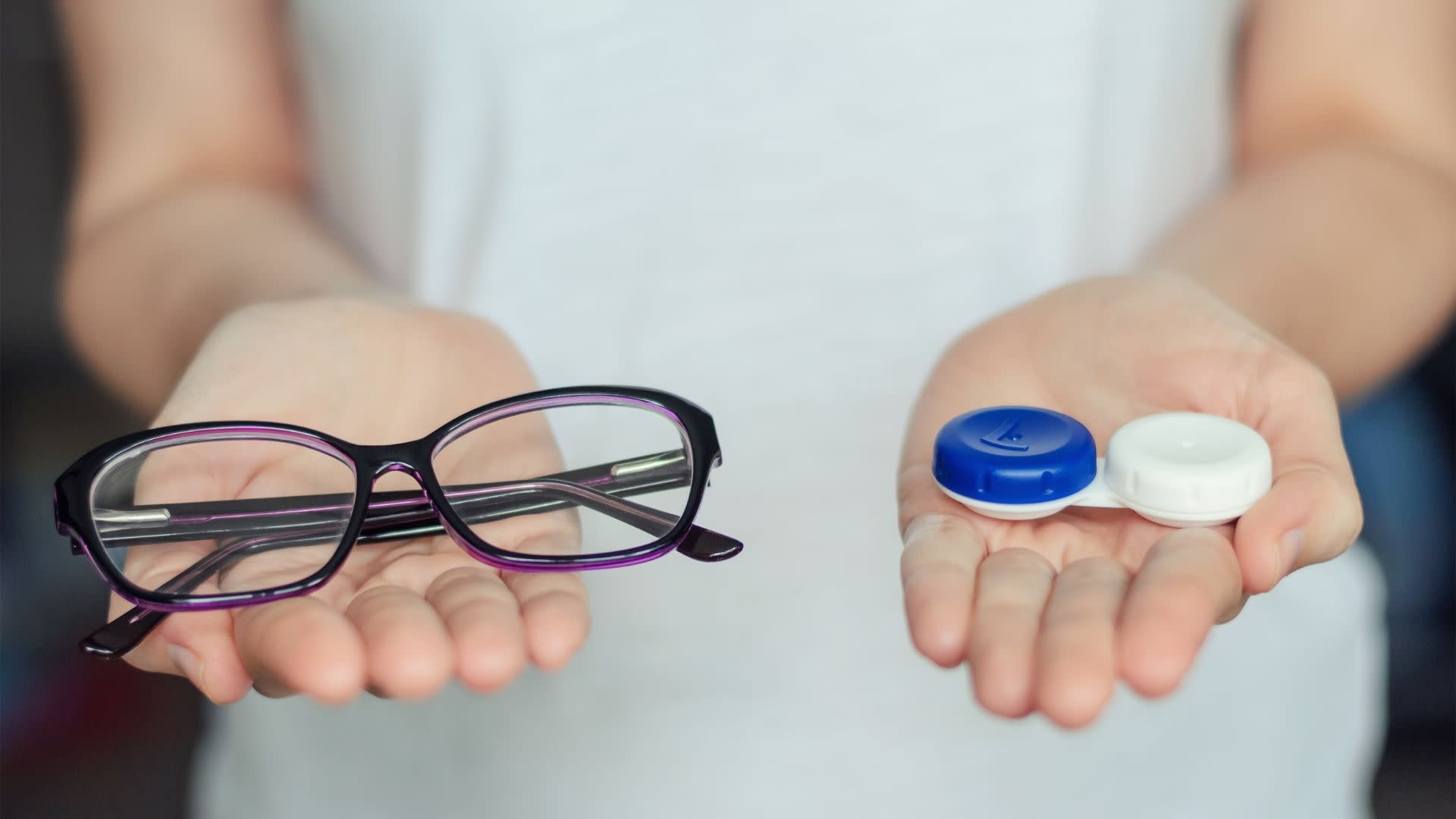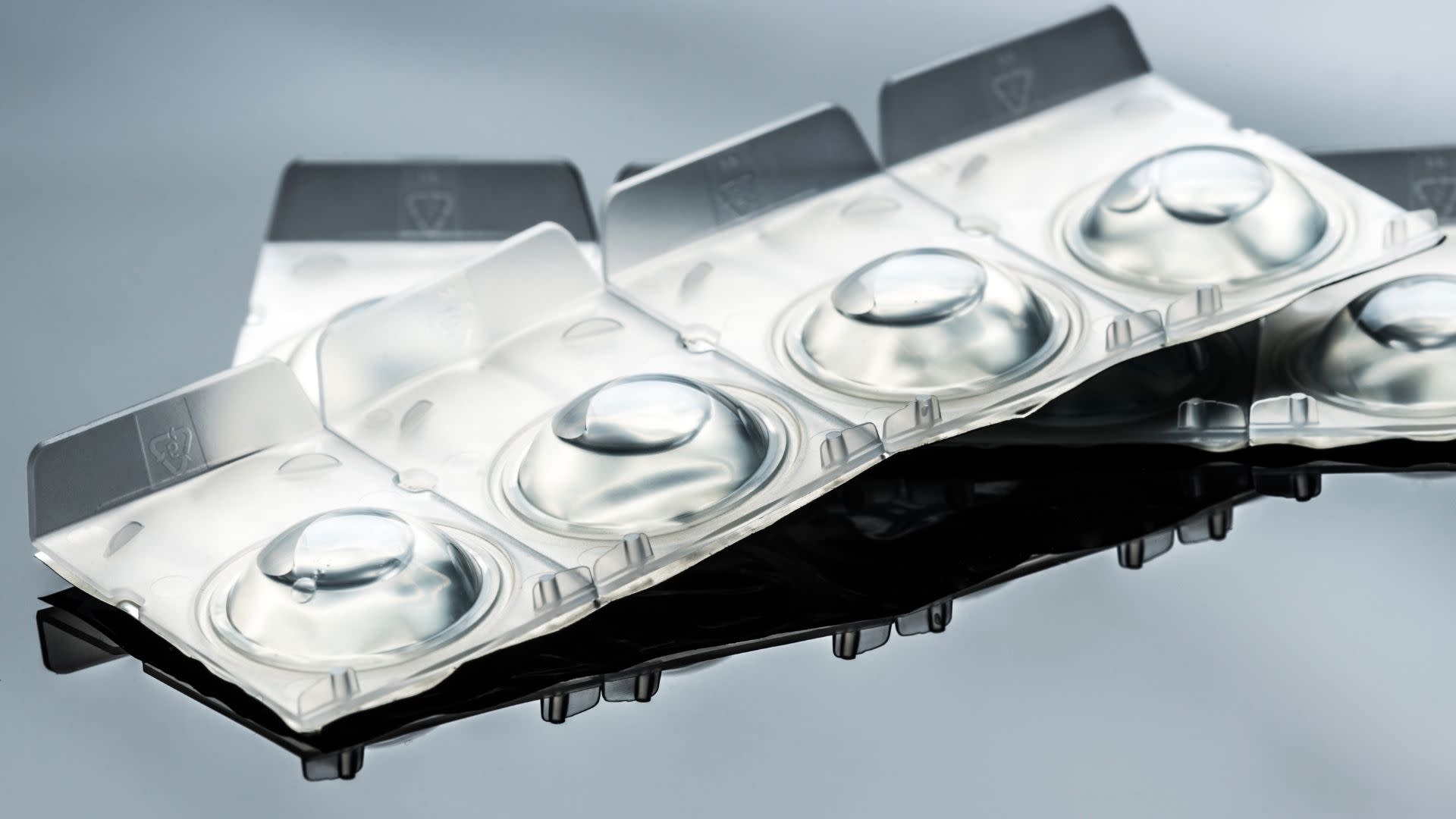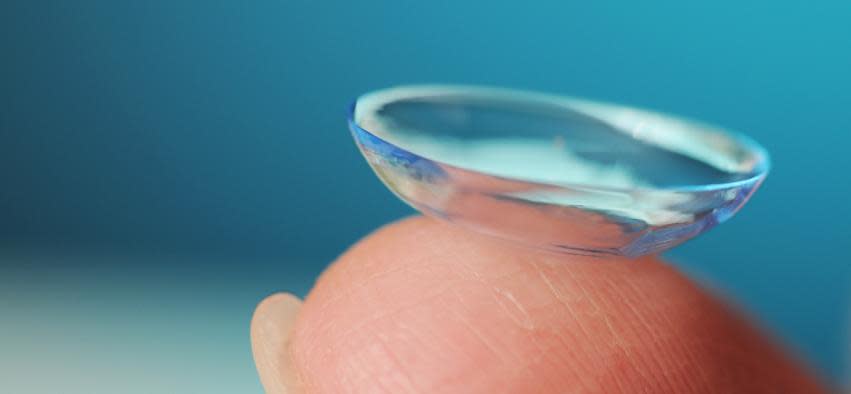
Many glasses wearers, especially those who have been wearing glasses for a decade or more may have been told that due to their glasses script or the nature of their vision problem means that they weren’t able to use contact lenses.
While this may have been true when they were first diagnosed with vision problems and prescribed glasses, advances in contact lens technology and materials means that far more people than ever before can opt to switch to contact lenses.
What are Contact Lenses?
Contact lenses are thin, curved lenses that are both adhered to the eye with and cushioned by the layer of tears that covers the eye. Much like glasses, contact lenses correct issues with the refraction of light of the cornea and lens, but the lenses sit directly on the cornea rather than having to be positioned in front of the eyes.
Contact lenses are available in a wide range of styles and materials, making them an option for a huge range of vision problems and conditions.
What Types of Contact Lenses Are Available?
While once upon a time there were only soft or rigid contact lenses available, each of which had to be carefully stored and cleaned between uses, contact lens users have many more options to choose from depending on the cause of their vision problems and needs.

Disposable Soft Lenses - The majority of contact lenses worn today are soft disposable contact lenses. There are typically three styles of disposable lenses - daily disposable, fortnightly disposable and monthly disposable. Daily disposable lenses are designed to be worn once and thrown out. As such these lenses typically offer excellent comfort and eye health, as they require no cleaning or maintenance.
Fortnightly and Monthly disposable lenses are designed to be replaced every two weeks or month respectively, but that doesn’t mean you can keep them in for all that time. Fortnightly and monthly disposable lenses need to be removed, cleaned and properly stored each night before bed. Your optometrist will advise you on what maintenance is required.
Toric Lenses - Disposable contact lenses are also available in toric versions. Whereas regular contact lenses serve a single purpose - correcting myopia (short sightedness) or hyperopia (farsightedness), toric contact lenses are also capable of correcting astigmatism. Astigmatism is a vision problem related to the curvature of the cornea or lens of the eye. Rather than having a rounded curve, like a soccer ball, people with astigmatism have mismatched curvature, like a rugby ball, therefore light does not focus properly, leading to blurred vision.
Due to the curvature issue, regular contact lenses do little or nothing to correct astigmatism, but toric lenses are specially shaped to change the vertical and horizontal refraction of light, offsetting the refractive problems of the cornea or lens. Like all contact lenses, toric lenses need to be fitted to the individual user. Due to the nature of the lenses and astigmatism, fittings for toric lenses may take longer than with normal contact lenses.
This is due to the fact that toric lenses have a specific orientation in which they need to be worn. To ensure that toric lenses stay on the eye, don’t slip and remain in the right orientation, there are a number of contact lens features that may be used to improve the lens stabilisation - including truncating the bottom of the lens , thickening or thinning parts of the lens to ensure that it stays in the right position or even adding “ballast” to the lens to ensure it stays in the right orientation.
As a result of the nature of toric lenses, they are typically more expensive than regular soft contact lenses.
Silicone Hydrogel Lenses - Sometimes referred to as “high oxygen” lenses. Silicone hydrogel soft contact lenses allow for greater oxygen permeability, allowing your eyes to “breathe” better, making for longer lasting use and greater comfort and overall eye health than normal hydrogel lenses. The oxygen permeability of silicone hydrogel lenses may also allow you to wear your contact while sleeping (see Extended Wear Soft Lenses).
Silicone hydrogel lenses are available in a number of prescriptions including daily disposable, fortnightly disposable, monthly disposable and multifocal.
Extended Wear Soft Lenses - Extended wear lenses are silicone hydrogel lenses designed to be wearable continuously for 30 days, including while asleep. The silicone hydrogel used in the lenses allows for greater oxygen flow to the eyes than regular contact lenses, but extended wear lenses aren’t suitable for all prescriptions or users.
Due to the extended wear lenses not being cleaned or replaced regularly, and the reduction of airflow to the eyeball, extended wear lenses carry a greater risk than regularly changed or removed contact lenses. These potential complications include a significant increase in the chance of an infection or other lens related complications. Extended wear lenses are typically used by people who have, for either mechanical or psychological reasons, have difficulty inserting and removing contact lenses.
Extended wear lenses need to be discussed with your optometrist as to whether you are a potential candidate for this type of lens.
Multifocal Soft Lenses - Multifocal contact lenses are designed for people with the common age-related vision problem, presbyopia, the loss of ability to focus at a close range. Due to the contact lenses being placed directly on the eye, multifocal contact lenses don’t require a change of head or eye position to focus on nearby objects unlike multifocal glasses.
Multifocal contact lenses are available in several materials and prescriptions, including silicone hydrogel and daily disposable.

Rigid Gas Permeable Lenses - As the name suggests, these lenses are made from a rigid plastic that is gas permeable allowing for oxygen flow to the eye. Due to the nature of the lenses, users typically take longer to acclimate, compared to soft lenses.
Rigid gas permeable lenses are excellent for correcting astigmatism and other vision problems resulting from irregular cornea and lens shapes.
Scleral/Mini-Scleral Lenses - A form of rigid gas permeable lens, scleral and mini-scleral lenses are larger than typical contact lenses, fitting over the sclera or peripheral cornea (the white part of the eye) instead of just the cornea.
Although they are larger than regular rigid gas permeable lenses, scleral and mini-scleral lenses can be more comfortable as the larger diameter holds liquid behind the lens. This ability to hold a reservoir of liquid makes scleral lenses suitable for helping people with severe dry eyes.
Scleral and mini-scleral lenses are typically used for the treatment of vision issues related to irregular corneas.
Hybrid Lenses - Hybrid lenses feature a rigid gas permeable central lens surrounded by a soft skirt, combining the excellent optics offered by rigid lenses with the comfort offered by soft lenses. Like other rigid lenses, hybrid lenses are typically used to correct vision problems related to irregular corneal shape.
Ortho-K Lenses - Orthokeratology lenses are used to correct vision and they are only worn during overnight sleep. Unlike other styles of lenses, Ortho-K lenses are intended to reshape the cornea to correct some astigmatism and mild to moderate short-sightedness.
Orthokeratology lenses are worn at night while asleep and taken out in the morning upon awaking, allowing the user to see normally without the need for corrective lenses.
A great advantage of Ortho-K lenses is that these lenses will also minimise the myopia progression in patients. The less short sighted a patient becomes the less potential eye complications the patient could endure in older age.
Is There An Age Limit For Contact Lenses?
There is technically no minimum age limit on the use of contact lenses, with any restrictions really being about ability to insert, remove and care for lenses rather than age. Whether contact lenses are recommended for a child comes down to responsibility and ability of the child and the child's parents/carer.

As there is no official or legal age requirement for contact lenses it is the discussion between the optometrist and parent/carer whether it is appropriate time to start contact lenses now or at a later date.
Similarly, there is no official upper age at which contact lenses may no longer be used. Again, the ability to safely insert, remove and care for lenses is a key factor as to when contact lenses may no longer be appropriate. Arthritis, neuromuscular diseases such as Parkinson’s and other conditions that may affect movement, as well as cognitive conditions such as dementia, or age-related cognitive impairment may factor in a decision to switch to wearing glasses rather than contact lenses.
Age-related degeneration may also mean that contact lenses are no longer able to be used due to the limited improvement in vision.
Are There Any Reasons Why I Couldn’t Use Contact Lenses?
Some prescriptions or vision issues may not be appropriate for contact lens use, but even if you have a condition that can be corrected using contact lenses, that doesn’t necessarily mean that they may be appropriate for you.
One common condition that may make it hard or impossible to use contact lenses is blepharitis, an inflammation of the eyelid, associated with either the oil producing Meibomian glands in the eyelid (posterior blepharitis), or an inflammation of the tissue around the eyelashes (anterior blepharitis). Both forms of blepharitis can increase the risk of eye infection or dry eyes.
People with seasonal allergies with severe eye symptoms, such as allergic conjunctivitis may have difficulty with contact lenses. These allergies may lead to symptoms such as itchy eyes, burning eyes, swollen eyes, excessive tearing or other watery discharges from the eyes, all of which may make it either extremely uncomfortable, or impossible to use contact lenses.
While conditions such as blepharitis and severe allergy may make using contact lenses difficult, they don’t necessarily rule out contacts on a permanent basis. Both conditions may be treated, and by working with an optometrist you may be able to find both a treatment plan and style of contact lens that works around or with any difficulties you may have.
If you’re interested in scheduling an optometrist appointment to talk about switching to contact lenses, the fastest and easiest way to search for and book healthcare appointments online is with MyHealth1st.